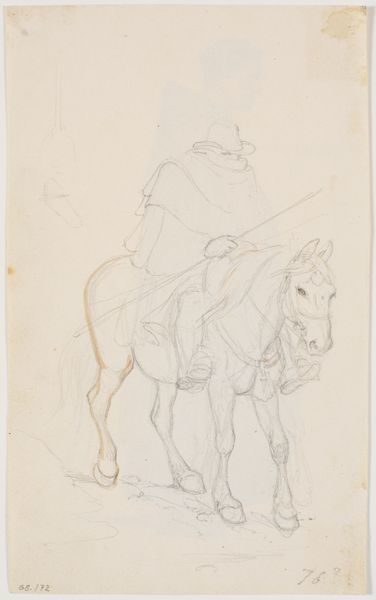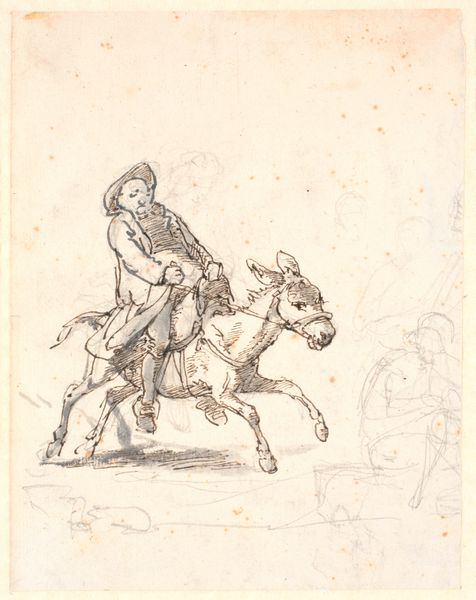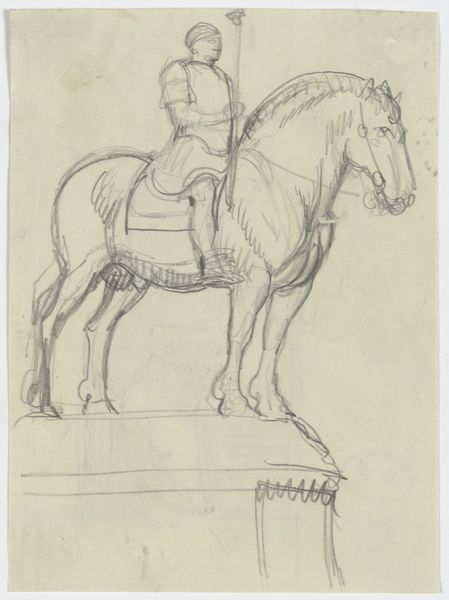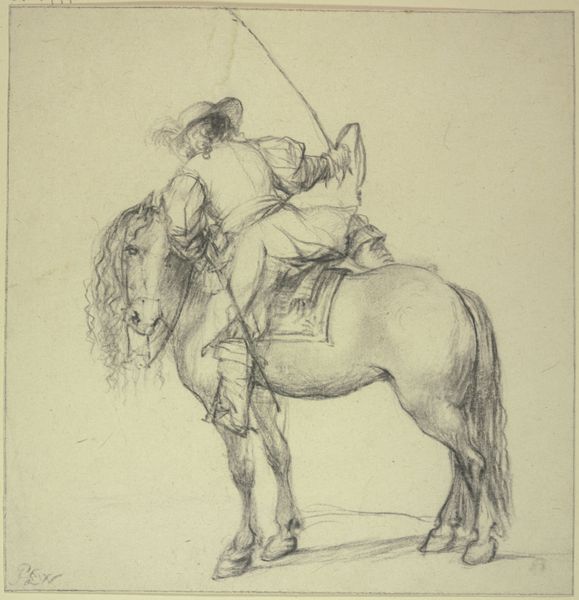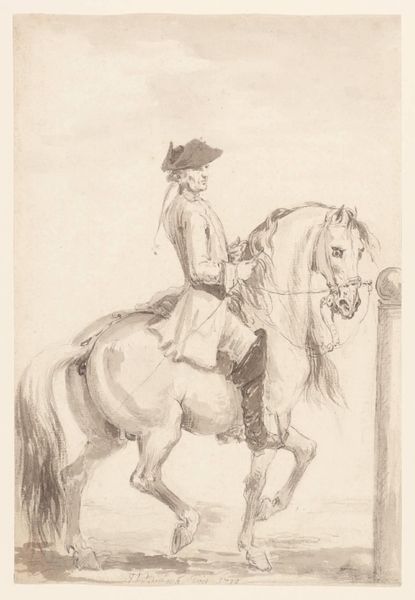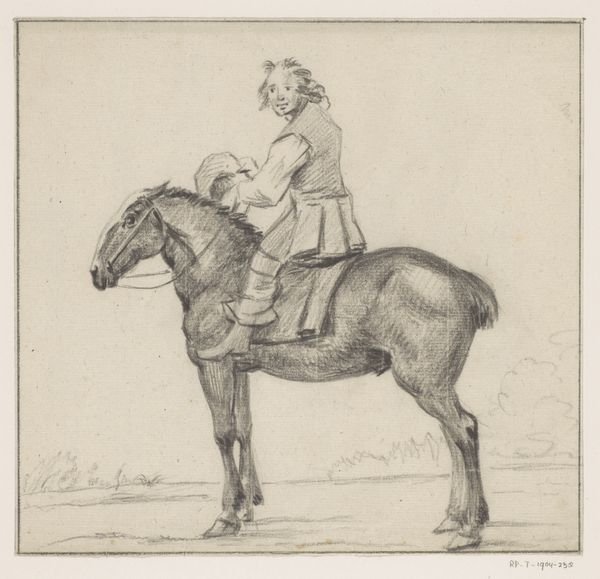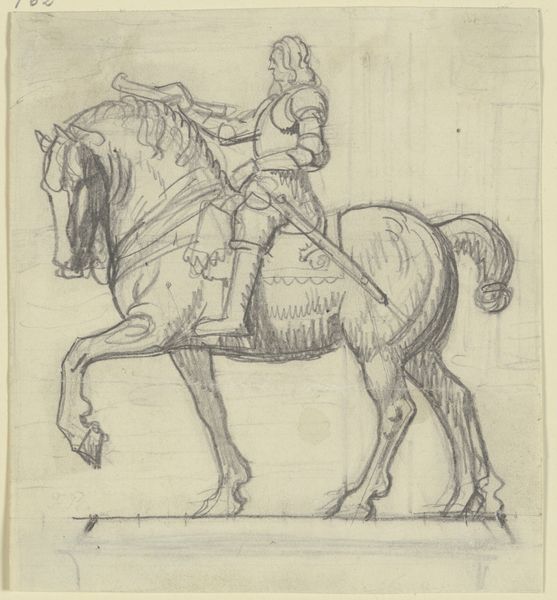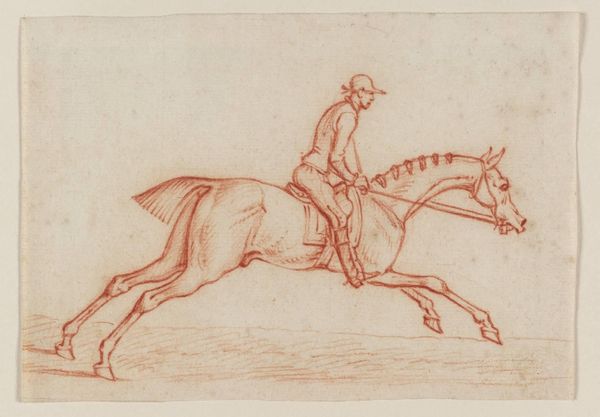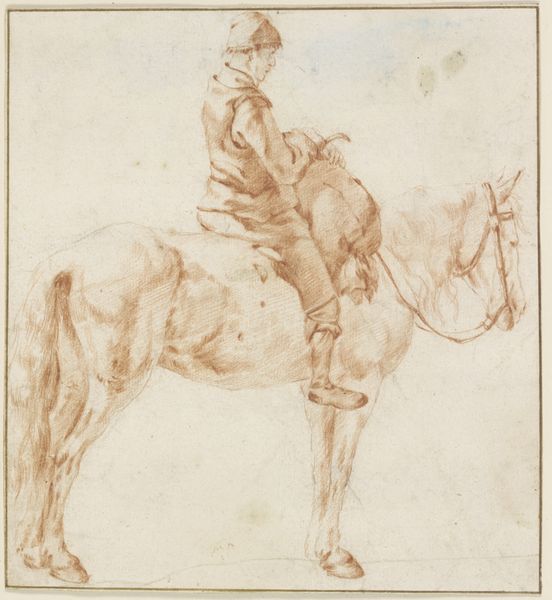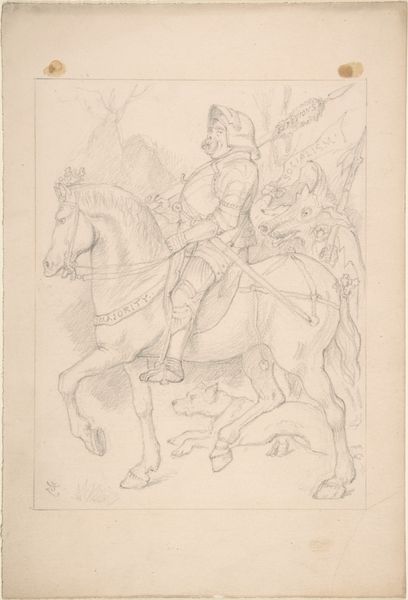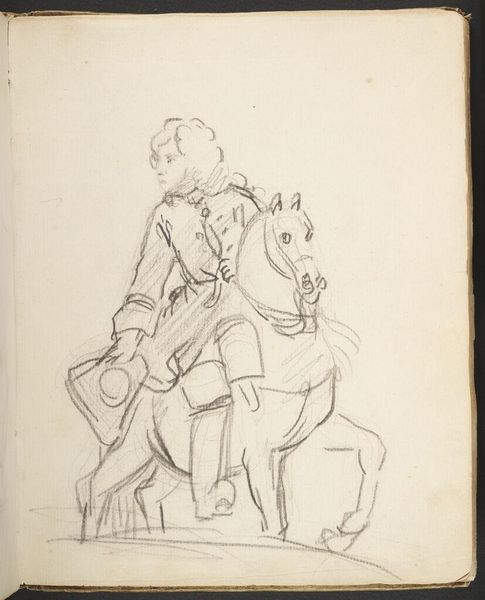
drawing, pencil
#
drawing
#
landscape
#
pencil
#
history-painting
#
academic-art
#
realism
Dimensions: height 126 mm, width 101 mm
Copyright: Rijks Museum: Open Domain
Curator: This drawing by Daniel Nikolaus Chodowiecki, from 1777, titled "Portret van kroonprins Frederik Willem te paard" resides here at the Rijksmuseum. It depicts Crown Prince Frederick William on horseback, rendered in pencil. Editor: My initial reaction is one of stark simplicity, but there's something really powerful about its restrained quality. It feels almost ethereal, like a memory surfacing. Curator: That's interesting. Its visual vocabulary draws heavily from the academic style prevalent then, prioritizing realism. Consider how depictions of royalty and power were crucial. Equestrian portraits have a lineage stretching back centuries, don't they? They convey dominance. Editor: Indeed, the horse, traditionally a symbol of virility and control. It raises its hoof, but the Prince himself seems disengaged, even passive. Doesn’t that subvert the standard reading? It suggests a weariness perhaps, the burden of inherited power. I find that complexity compelling. Curator: That passivity could stem from a larger cultural phenomenon: the dawn of the Enlightenment and the challenge to traditional authority. Chodowiecki gives us a window into how ideas of power are evolving. We observe the crown prince as he is being molded and shaped by expectations. Editor: And it does speak to how public figures are always performing a role, don't they? This drawing reveals how social identities are constructed, and, to me, the thin pencil lines only emphasize the performative nature of royalty. This contrasts with its sharp precision with softer suggestive, contour lines. I keep getting drawn back to how delicate and provisional the drawing feels as a whole. Curator: Yes! This brings us back to your first impression of simplicity and restraint: it isn’t just a portrait; it’s an interrogation. Thank you for sharing these valuable considerations on such a portrait! Editor: My pleasure! I look at art to learn and, also, to see and appreciate the values we hold, the assumptions that may now look outdated, and, perhaps, in a very real sense, who we are.
Comments
No comments
Be the first to comment and join the conversation on the ultimate creative platform.
